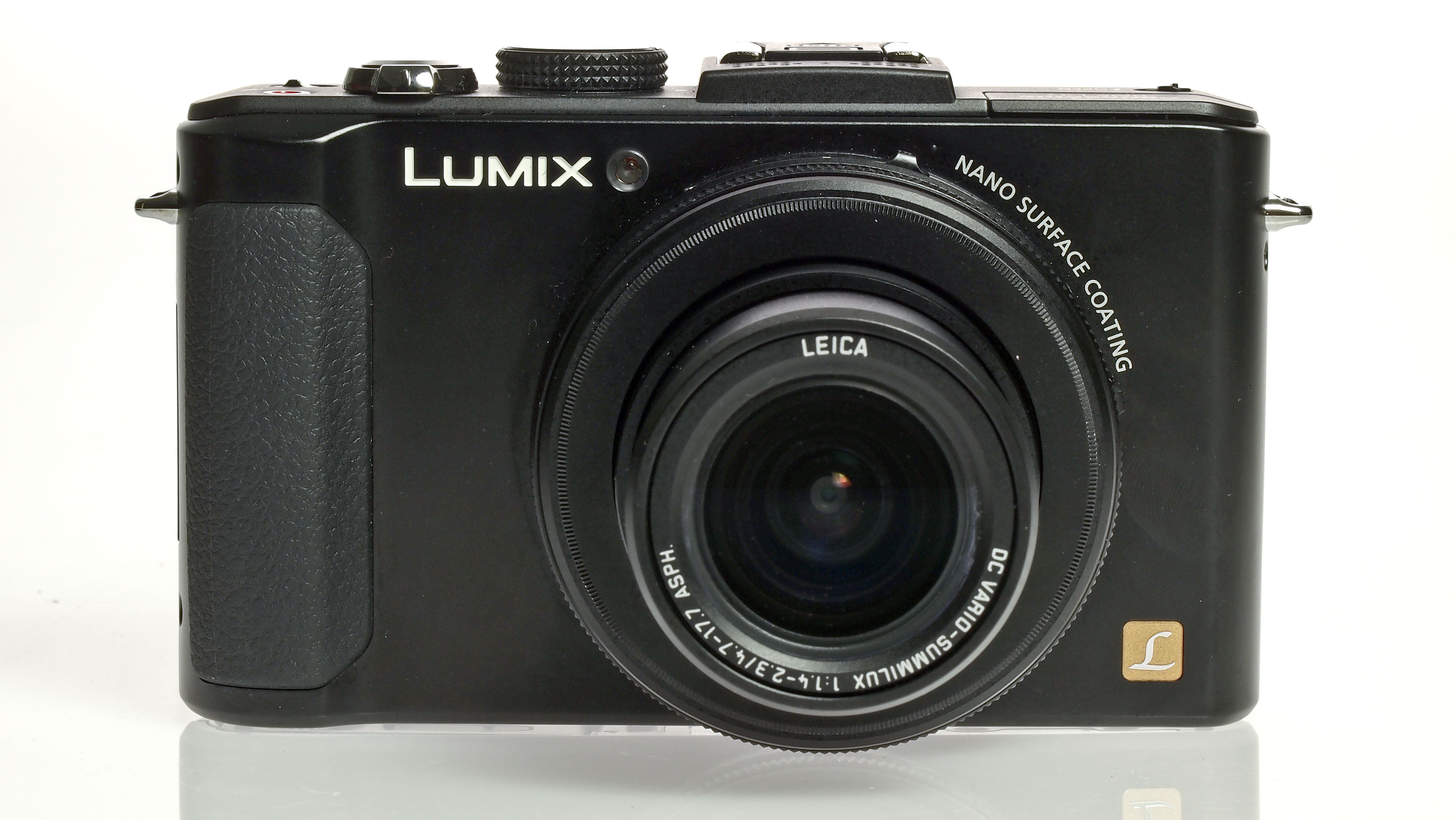Why you can trust TechRadar
We shoot a specially designed chart in carefully controlled conditions and the resulting images are analysed using DXO Analyzer software to generate the data to produce the graphs below.
A high signal to noise ratio (SNR) indicates a cleaner and better quality image.
For more more details on how to interpret our test data, check out our full explanation of our noise and dynamic range tests.
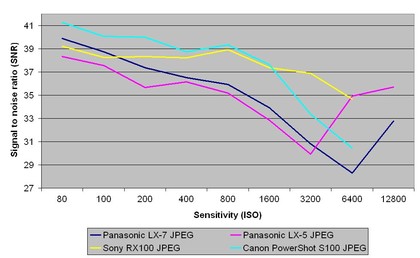
JPEG images from the Panasonic LX7 show similar signal to noise ratio results to the Panasonic LX5 up to a sensitivity of ISO 3200, after which it doesn't perform as well as its sibling. Images from the Sony RX100 and Canon S100 show a higher signal to noise ratio than the Panasonic LX7's throughout almost the whole ISO range.
Raw signal to noise ratio
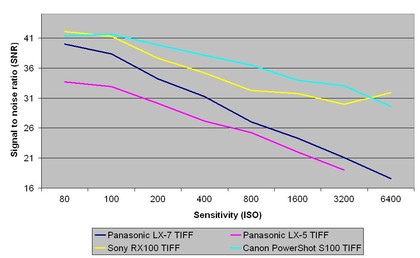
TIFF images (After conversion from raw) from the Panasonic LX7 again sit below the Sony RX100 and Canon S100, but this time they show a better signal to noise ratio than the Panasonic LX5, throughout the entire sensitivity range.
Dynamic range
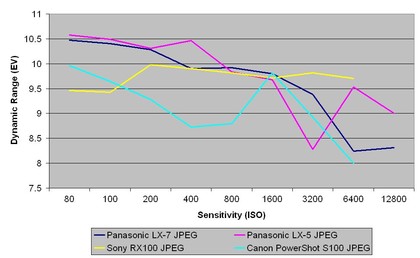
This chart indicates that dynamic range in the Panasonic LX7's JPEGs is the most consistent of all the cameras here, performing at the same level as the LX5 at the lower sensitivities, matching the Sony RX100 in the mid-range and finishing beating the Canon S100 throughout the entire sensitivity range.
Raw dynamic range
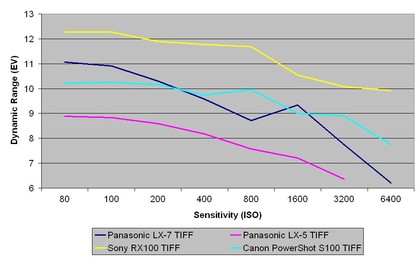
In TIFF images converted from raw files, the Panasonic LX7's JPEGs produce a less impressive dynamic range, falling well below the Sony RX100 at all sensitivities, beating the Canon S100 at lower ISOs then falling below it in the middle and upper reaches, but sitting above the Panasonic LX5 the whole time.
Current page: Noise and dynamic range
Prev Page Image quality and resolution Next Page Sample ImagesAmy has been writing about cameras, photography and associated tech since 2009. Amy was once part of the photography testing team for Future Publishing working across TechRadar, Digital Camera, PhotoPlus, N Photo and Photography Week. For her photography, she has won awards and has been exhibited. She often partakes in unusual projects - including one intense year where she used a different camera every single day. Amy is currently the Features Editor at Amateur Photographer magazine, and in her increasingly little spare time works across a number of high-profile publications including Wired, Stuff, Digital Camera World, Expert Reviews, and just a little off-tangent, PetsRadar.
